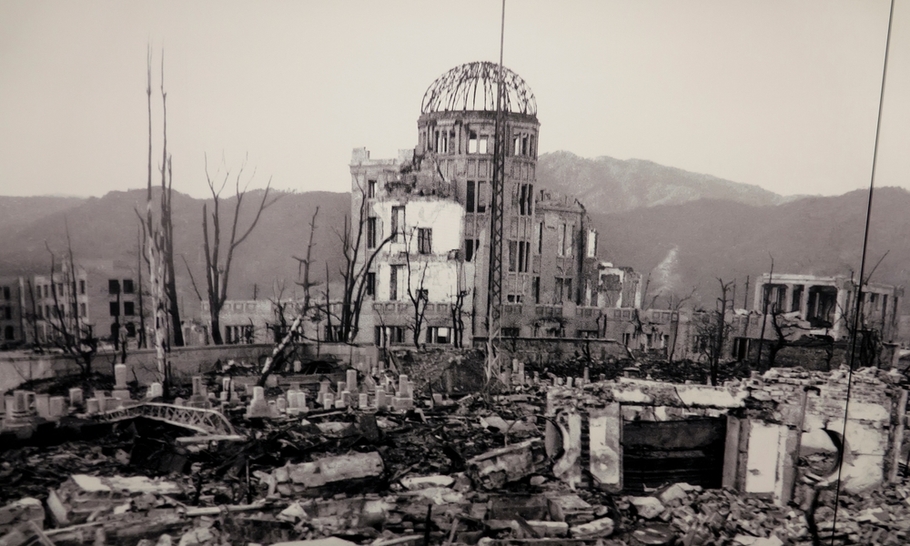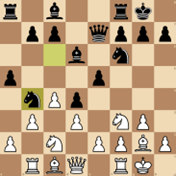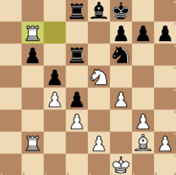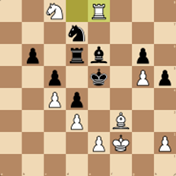Go and the atomic bomb

(Shutterstock)
On August 6, 1945, the world saw the first use of the atomic bomb in war. Hiroshima was destroyed in a single morning. On that same day, in a small town outside the city, two men were playing the second game of a Go championship match. The coincidence is remarkable, and it says something about the way the human mind can shut out the world around it.
Go, like chess, is a battle between two opponents. Black and White take turns placing stones, not on squares, but on the intersections of a grid. All the stones are identical. Victory does not come from cornering a king, but from surrounding and holding more territory than your opponent. The game was brought to the attention of many in the West through Yasunari Kawabata’s The Master of Go. Kawabata himself, after the suicide of his friend Yukio Mishima, took his own life.
During the war, Go suffered. Young players were drafted, paper for newspapers was scarce, and Go columns were among the first to be cut. Even so, some tournaments went ahead, with the games never printed. By 1945, the conditions for holding matches were poor. That spring, Kaoru Iwamoto, a 7-dan professional, won the right to challenge Hashimoto Utaro for the third Honinbo title. Tokyo was too damaged to host them. Eventually they found a venue in Hiroshima.
The city’s police chief, himself a Go enthusiast, told them not to play there; it was too dangerous. But when he was called away, they ignored his order and played the first game from July 23 to 25. Aircraft strafed the city, but the game went on.
When the police chief returned and discovered what had happened, he forbade them to play again. They moved to Itsukaichi, a suburb of Hiroshima, for the second game, which began on August 4. Their decision to defy the authorities and to move out of the city undoubtedly saved their lives.
On the morning of the 6th, Hashimoto was in the garden when there was a flash of blinding light, followed by the rising of the mushroom cloud. The blast shattered windows and scattered the stones from the board. They reset the position and finished the game. Hashimoto won by five points.
That evening, the survivors began to arrive in Itsukaichi. Only then did the players begin to grasp what had happened. The house where they had first planned to play was gone. The owner was dead.
A week later the war ended. The match resumed in November and ended in a 3–3 tie. Japan was in chaos, and it was not until July 1946 that a playoff was arranged. Iwamoto won the first two games and took the title.
Both Iwamoto and Hashimoto were important figures in post-war Japanese Go. Had they been killed that day, the game’s history would have been different. Iwamoto defended his title in 1947, but in 1959 Hashimoto regained it. Then, holding the top title, Hashimoto broke away from the Japan Go Association and founded the Western Japan Go Association. For a time the two organisations were rivals; eventually they worked together.
Iwamoto lived to ninety-seven. In his life he travelled widely, establishing Go centres in Amsterdam, São Paulo, Seattle, and New York. His aim was to make Go an international game. That he could spend a lifetime doing this is due, in part, to a simple decision made on a summer morning in 1945: to play a game of Go in the middle of a war.
Chess is a game of checkmate, not (as in Go) territorial strangulation. However, in chess strangulation also occasionally succeeds. This week’s game is a win of mine against a former British champion. My opponent finally ran out of moves.
Raymond Keene vs. George Botterill
National Club Championship, Oxford, 1970
- Nf3 d5 2. c4 d4 3. g3 Nc6 4. Bg2 e5 5. d3 Bd6 6. O-O Qe7?
An inaccurate provocation, with both, 6… Nge7 or …Nf6, being preferable.
- Na3 Nf6 8. Nc2 O-O 9. Rb1 a5 10. b3 Nb4 TN
In modern times, 10… h6 was played in Jessel-Lampert, PRO league chess.com, 2017. The engine, however, prefers either 10… Rd8 or …Bg4.

- a3 Nxc2 12. Qxc2 Bxa3 13. Bxa3 Qxa3 14. Nxe5 Qc5?!
An inaccuracy. 14… Qd6 or 14…Re8 maintains equality.
- Nf3 Ra6 16. Qb2 Rd6?!
This cedes ground to White. After, 16… Rd8 17. b4 axb4 18. Qxb4 Qxb4 19. Rxb4 Ra2 20. Re1 b6 21. Kf1 Bb7 22. Rbb1 Ng4 23. h3 Bxf3 24. Bxf3 Nh2, White is somewhat constrained.
- b4 axb4 18. Qxb4 Qxb4 19. Rxb4 b6 20. Ra1 Re8 21. Kf1 Bd7?!

Another misstep favourably massages White’s advantage. Better was, 21… Kf8 22. Rb2 Bg4 23. Ra7 Re7,
- Ra7 c5 23. Rb2 Rb8?!
And yet more slippage, to White’s advantage. Black does best with, 23… h6 24. Rb7 Ra8 25. Rb1 Bf5 26. Nh4 Bg4 27. h3 Be6 28. Nf3 Ra6 29. Ne5 g5, but White now has a firm initiative.
- Ne5 Be8 25. Rc7 Rbd8
A rational choice although 25… Rdd8 is thought a superior try by the engine. But all of these inaccuracies have accumulated into an advantage of significance for White.
- f4 Kf8 27. Rb7?
Although White remains considerably better after the text, even better was the crushing, 27. Ra2 Kg8 28. Raa7 g6 29. Bf3 h5 30. h3 Bd7 31. Kg2 Be6 32. Nxf7 Bxf7 33. Rxf7 Nd7 34. Re7, after which Black’s existing deficit plus his weak b6-pawn, should prove terminal.
27… Ra8 28. Rxf7+ Bxf7 29. Bxa8 Be8 30. Bf3 Ke7?!
This slight error (Black should prefer, 30… Nd7 or …h6) provides the tipping point in this contest and White demonstrates winning technique to grind down any further resistance.
- Ra2 Nd7 32. Nc6+ Kf6 33. Ra8 Bf7 34. Rd8 Be6 35. g4 g6 36. Kf2 h5 37. g5+ Kf5 38. Ne7+ Kxf4 39. Nc8 Ke5 40. Re8 Black lost on time 1-0

Black is paralysed, with weak pawns, his bishop pinned, and is bound to lose the exchange.
Ray’s 206th book, “ Chess in the Year of the King ”, written in collaboration with Adam Black, and his 207th, “ Napoleon and Goethe: The Touchstone of Genius ” (which discusses their relationship with chess) can be ordered from both Amazon and Blackwells. His 208th, the world record for chess books, written jointly with chess playing artist Barry Martin, Chess through the Looking Glass , is now also available from Amazon.
A Message from TheArticle
We are the only publication that’s committed to covering every angle. We have an important contribution to make, one that’s needed now more than ever, and we need your help to continue publishing throughout these hard economic times. So please, make a donation.





